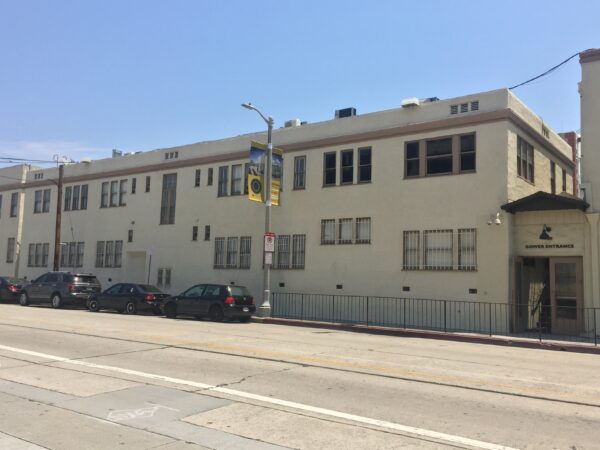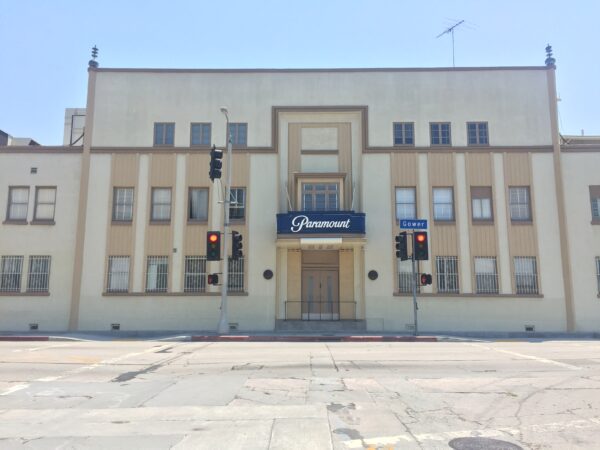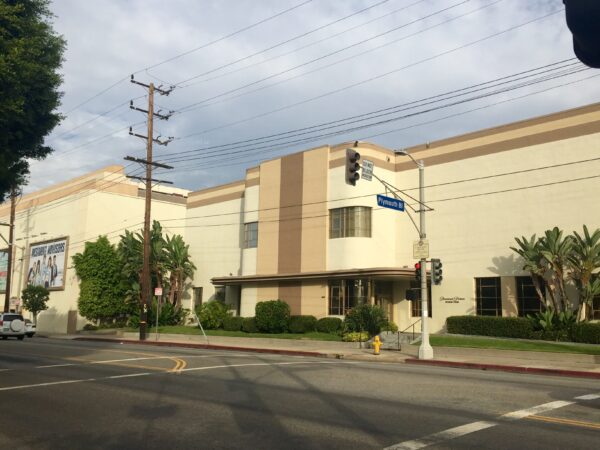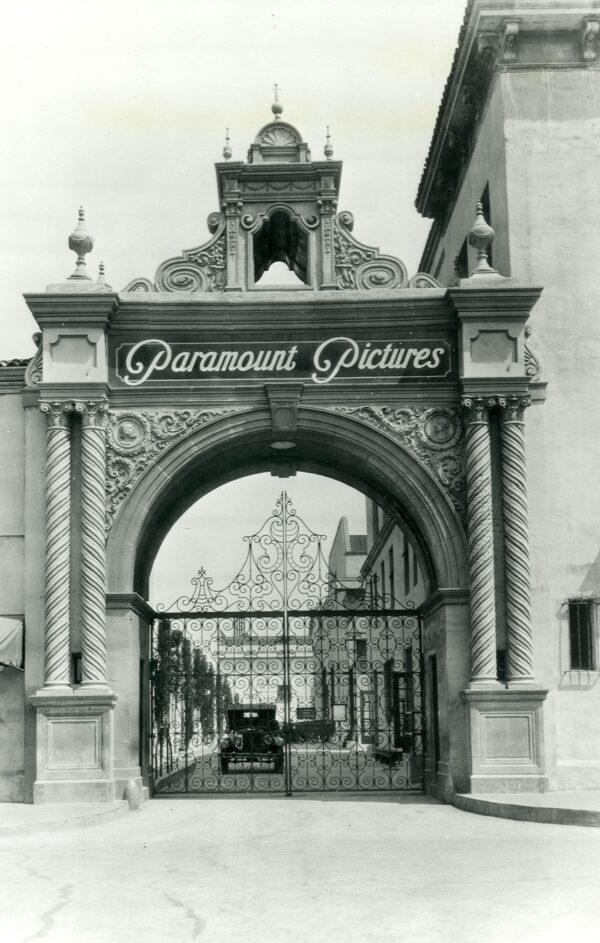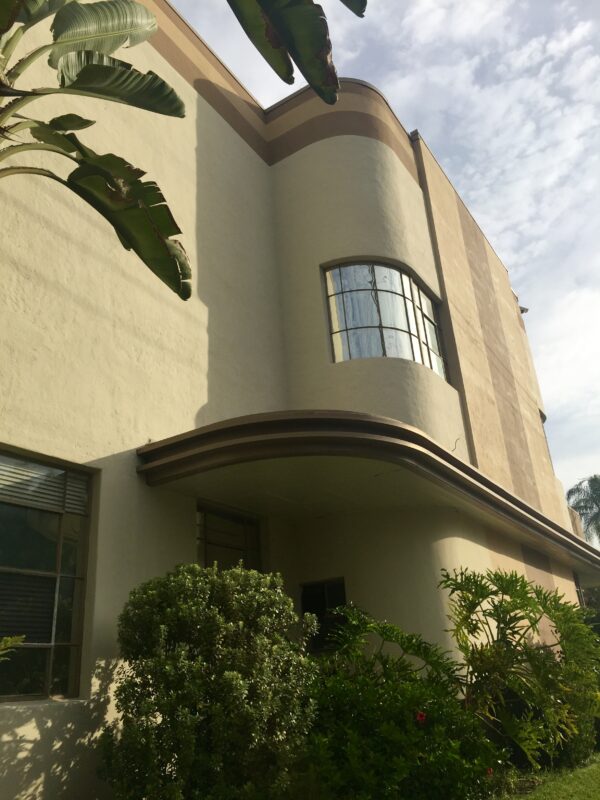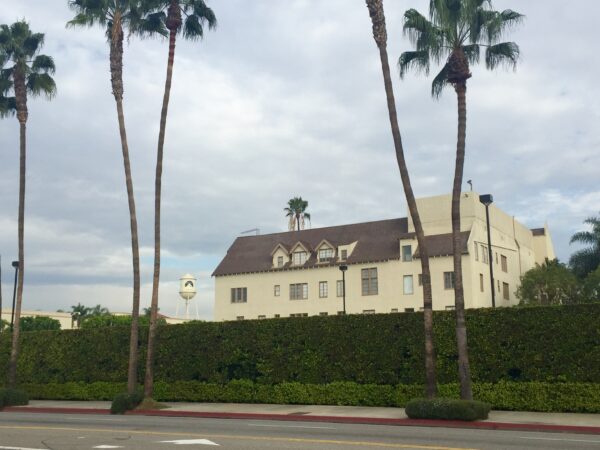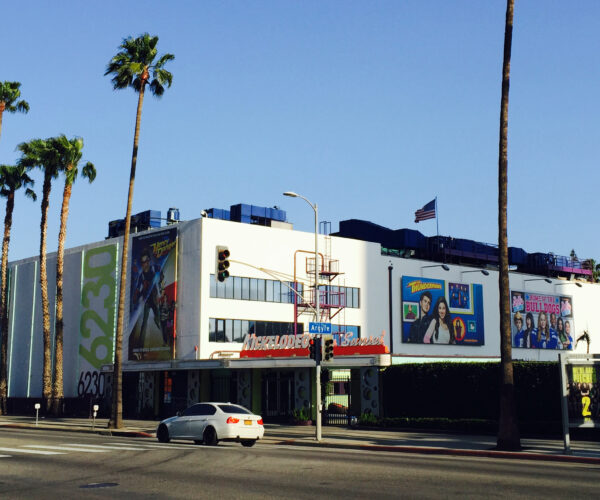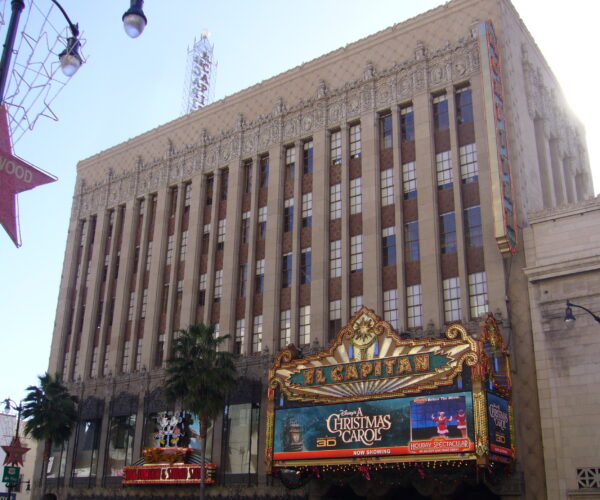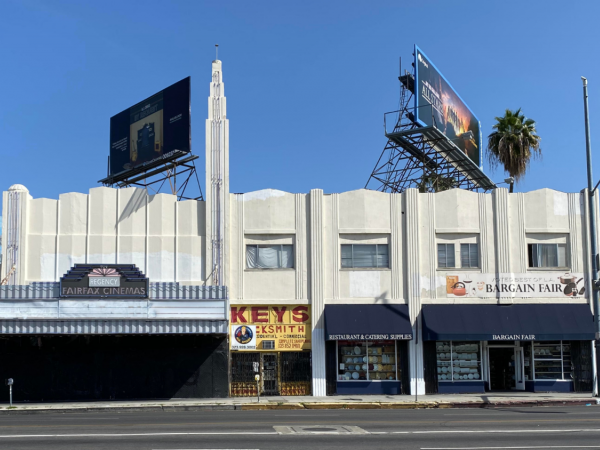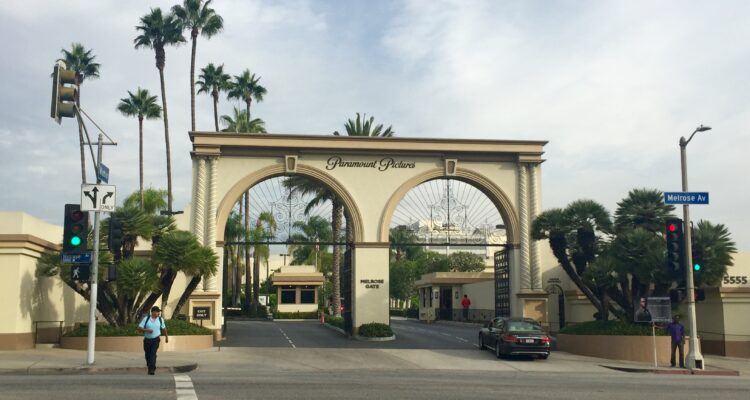
Place
Paramount Pictures
Paramount Pictures reveals the evolution of Hollywood film studios in the twentieth century and is home to a rich collection of historic buildings.
Resolved
Paramount established a Historic Resources Preservation Plan, which was integrated into the new Paramount Pictures Specific Plan.
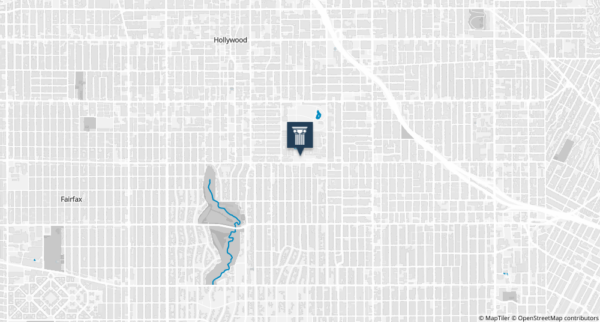
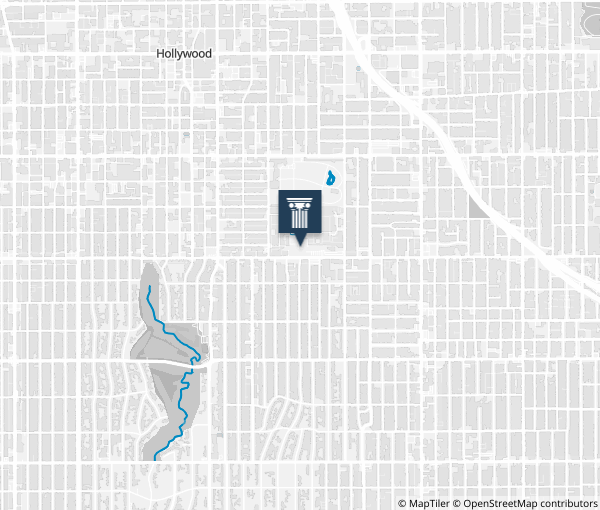
Place Details
Address
Neighborhood
Year
Property Type
Government Officials
Community
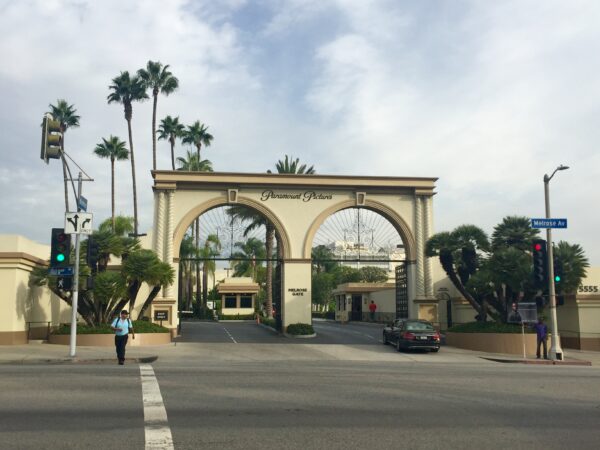
Paramount Pictures | Laura Dominguez
Overview
Located at the southern edge of Hollywood, the Paramount Pictures studio lot reflects the evolution of Los Angeles’ motion picture industry, from the silent film era, to the birth of sound, to the rise of television and other media.
The studio lot, which is bound by Melrose Avenue, Gower Street, Van Ness Avenue, and the Hollywood Forever Cemetery, contains two potential historic districts: the Paramount Pictures Historic District and the RKO Studios Historic District. The site also includes the Streamline Moderne KCAL Building, completed in 1935 as a radio broadcasting facility.
Buildings and structures on the lot reveal industry practices from Hollywood’s “Golden Ave,” in which production, distribution, and exhibition were fully integrated. As a result, the facilities reflect a diverse range of uses, styles, and typologies. Examples of building types include administrative offices, pre-and-post production facilities, stages, utility buildings, and actor support services.
The lot also retains its original street patterns, circulation paths, and integrated landscape design.
In addition to its contributions to the entertainment industry, the Paramount Pictures studio lot gave birth to the first lesbian publication in the United States, which circulated in Los Angeles from June 1947 to February 1948.
The magazine did not have any advertisements, nor did it have any editorial contact information, and the only name associated with its content was Lisa Ben (an anagram of “lesbian”). The underground publication was entitled Vice Versa and subtitled “America’s Gayest Magazine.”
Edythe Eyde, otherwise known as Lisa Ben, single-handedly published Vice Versa while working as a secretary in the Publicity Department at RKO Studios. The department was located in “Building D” or the Jesse Lasky Building, which is a contributing property to the potential RKO Studios Historic District.
About This Place
About This Place
Both the Paramount Pictures lot and the RKO Studios lot are associated with “The Major Studio Era” or Hollywood’s “Golden Age.” As competition increased, smaller companies merged with larger ones, and film production adopted an industrial model.
By 1920, the American film industry was largely controlled by eight companies, which were known as the “Big Eight.” These companies—Famous Players-Lasky (now Paramount), Fox, Warner Brothers, United Artists, RKO, Columbia, Metro (now MGM), and Universal—controlled ninety-five percent of film revenues in the U.S.
These studios set global precedents for filmmaking and depended on modern facilities to produce, distribute, and exhibit motion pictures. Though the 1920s, ’30s, and ’40s witnessed the ambitious expansion of the industry, the Major Studio Era came to an end in 1949 following a federal investigation of anti-trust violations.
Because Paramount and RKO both continued to produce motion pictures and made significant developments in radio and television in later decades, they reflect the development of the postwar entertainment industry to suit changing tastes and social patterns.
Entertainment history
Founded in 1913, Paramount Pictures traces its formation to Adolph Zukor’s Famous Players Film Company. Zukor’s Famous Players merged with the Jesse L. Lasky Company in 1916, creating the Famous Players-Lasky Corporation. The studio made its home near Sunset and Vine.
By the 1920s, Famous Players-Laksy was one of the most prominent studios in Hollywood. In 1926, the company purchased its present lot (formerly home to United Studios) and embarked on an ambitious building program.
The studio’s name changed to Paramount in 1930 and continued to expand its film productions and theatre network. It also invested heavily in radio, music, and, later, television. Notable films from this era include Monkey Business, Shanghai Express, and I’m No Angel.
In 1967, Paramount Pictures purchased the neighboring RKO Studios lot from Desilu Productions.
The Radio-Keith-Orpheum (RKO) Corporation formed in the late 1920s, merging a circuit of vaudeville theatres, film production, and radio networks. In order to promote the union of radio and motion pictures, the company pursued an elaborate advertising campaign centered on the image of a giant radio tower perched on a globe.
Like neighboring Paramount, RKO Studios undertook a large-scale building campaign in the late 1920s and early 1930s in order to accommdate new facilities for talking pictures. During the ’30s and ’40s, the studio produced a number of celebrated films, including Gunga Din, Love Affair, and Citizen Kane, and it enjoyed a legendary partnership with Ginger Rogers and Fred Astaire.
In 1948, tycoon Howard Hughes purchased the studio, which he ran until 1957. Desilu’s Lucille Ball and Desi Arnaz owned the RKO lot from 1957 until 1967, filming episodes of “The Lucy Show” on Stages 21 and 25.
LGBTQ history
Beyond the realm of Hollywood’s Golden Age, the studio lot is significant for its associations with the city’s lesbian history.
Edythe Eyde first arrived in Los Angeles, against her parents’ wishes, in 1946. She lived alone and in a short time acquired a job at RKO Studios as a secretary to Milton Howe. He was a low-level executive in the publicity department who advised her to “look busy” as there would not be a large work load for her to execute.
Eyde had come out as a lesbian the year before and, given her newfound freedom from home, she wanted to meet other women like her. At work she found the necessary supplies, time, and privacy to launch a publication that spoke to the lesbian community of Los Angeles.
She began writing the “gayest magazine” at her secretarial desk crafting the penname Lisa Ben (an anagram for “lesbian”) as a security measure. The first issue was fifteen pages long, and she created ten carbon copies for distribution.
Eyde confided in her neighbors about her sexuality and gave them copies to read. She urged them to pass the magazine along rather than throwing it out. Her networking skills soon enabled her to reach a wider audience of loyal readers. For a short time, she mailed issues out to various locations, but soon stopped when a friend advised her on the dangers of using the postal system. Homosexual material was considered obscene, and its circulation was a prosecutable offense under the Comstock Act.
Eyde went onto publish twelve issues of Vice Versa from June 1947 to February 1948. Each one focused on different topics and reflected the personality and tastes of its publisher. The publication discussed various aspects of lesbian life and introduced poetry and short fiction. Like other magazines, Eyde also wrote reviews on literature and film.
Vice Versa set in motion a new channel of communication for lesbians in Los Angeles. In a time when circulation of “homosexual” material was a prosecutable offense, Eyde’s underground publication gained a loyal following.
Declaring itself “America’s Gayest Magazine,” Vice Versa set an important precedent for LGBTQ publishing in the mid-twentieth century as the first LGBTQ-interest newsletter in the country.
Eyde lost her job in February 1948 when Howard Hughes purchased RKO studios. Thereafter, Eyde was unable to the find the time and privacy to draft any further issues, ensuring an end to Vice Versa. She continued to work as a secretary at various locations as well as writing freelance articles to then-emerging gay publications.
Several years later, The Ladder, to which Edye was a contributing writer, became the first nationally circulated lesbian magazine in 1956. Its gay counterpart was The Advocate, which began publishing content in 1967.
The magazines brought gay and lesbian interests and concerns to a broader audience. In a broader sense, these literary publications became tools for normalizing homosexuality in an effort to gain acceptance from society at large.
ONE National Gay & Lesbian Archives holds a complete set of the magazine.
In 2010 she was recognized for her work in journalism by the National Lesbian and Gay Journalists Association and inducted into their Hall of Fame. She died on December 22, 2015 at the age of 94.
Our Position
In October 2016, Los Angeles City Council approved an ambitious master plan for Paramount Pictures, which will guide and implement improvements to its 62-acre studio lot over a period of twenty-five years. The project is designed to support and enhance Paramount’s contributions to the entertainment industry through sensitive infill construction and the maintenance of the site’s historic resources.
Background
The project site contains two potential historic districts: the Paramount Pictures Historic District and the RKO Studios Historic District. Both have been determined eligible for listing on the National Register of Historic Places for their associations with the early film industry. In addition, the 1935 KCAL Building at 5515 Melrose Avenue has been identified as eligible for local, state, and national designation.
The proposed Specific Plan would allow for the construction of approximately 1,900,000 square feet of new stage, production, office, and retail uses. Approximately 500,000 square feet of existing floor area would be removed.
While the KCAL Building would be retained and rehabilitated, the project would construct a new building of up to fifteen stories (or 240 feet in height) directly behind the historic structure.
The project would demolish eighteen contributing buildings in the Paramount Pictures Historic District and thirteen contributing buildings in the RKO Historic District. The districts would remain sixty-two percent and seventy percent intact, respectively.
In order to ensure that the project does not have an adverse impact on cultural resources, Paramount established a Historic Resources Preservation Plan, which will be integrated into the new Paramount Pictures Specific Plan.
The Conservancy submitted comments on the Draft Environmental Impact Report (EIR), which was released in September 2015. The City of Los Angeles published the Final EIR in April 2016, and public hearings took place over the summer.
The Conservancy engaged in ongoing conversations with Paramount Pictures and the project team, and we greatly value the thoughtful approach to integrating the site’s collection of historic resources into the master plan. We submitted comments on the Draft Environmental Impact Report (EIR) in October 2015.
While we believe that a number of improvements were made to the master plan over the course of our discussions, we had outstanding questions and concerns over the impact of the plan on the two potential historic districts and the individually-eligible KCAL Building.
In particular, we recommended: 1) the preparation of detailed standards to guide sensitive new construction; 2) the adoption of a clear design review process with the Office of Historic Resources pertaining to work that may impact historic resources; and 3) the incorporation of an additional mitigation measure to require local designation of identified historic resources.
